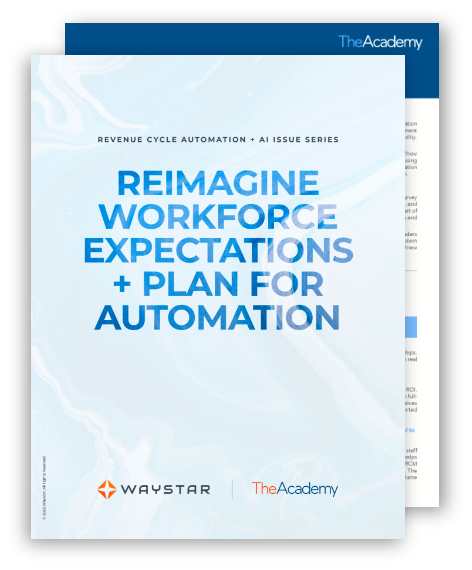
REIMAGINE
WORKFORCE
EXPECTATIONS +
PLAN FOR
AUTOMATION
Revenue cycle automation
+ AI issue series
As Leading Health Systems (LHS) face unprecedented shifts in the workforce landscape and persistent strain on their margins, automation offers a timely solution to drive operational efficiencies and relieve workload burden. Many LHS are targeting revenue cycle management (RCM) for automation given the volume of repetitive tasks and the critical role RCM plays in preserving an organization’s financial viability.
Recent research evaluated the adoption of robotic process automation (RPA) and artificial intelligence (AI) across LHS. Regardless of how LHS managed revenue cycle, executives universally reported low return on investment (ROI). While the majority of LHS are not yet using RPA and AI for RCM, over 50% plan to pursue these technologies in the next 3 years. Given the rapid projected increase of automation technologies, it is critical to understand what factors are driving low ROI and how health systems can better prepare for automation.
When implementing RPA or AI for revenue cycle, healthcare leaders recognize that workforce adjustments will be necessary to see ROI. Finance and revenue cycle executives consistently report that they anticipated significant changes, such as direct cost savings from fulltime employee (FTE) reductions. Yet, actual workforce changes are often a fraction of what executives expect. Among LHS executives reporting on the impact of automation investments on their workforce, only 18% eliminated active positions and another 18% reported no workforce changes.3 The vast majority (62%) of organizations reallocated staff to different roles.
What’s inside
- 1 Explosion of RPA + AI adoption
- 2 Primary drivers of low ROI
- 3 Automation + AI more likely to require workforce adjustments
- 4 Opportunities for leaders to improve workforce outcomes
